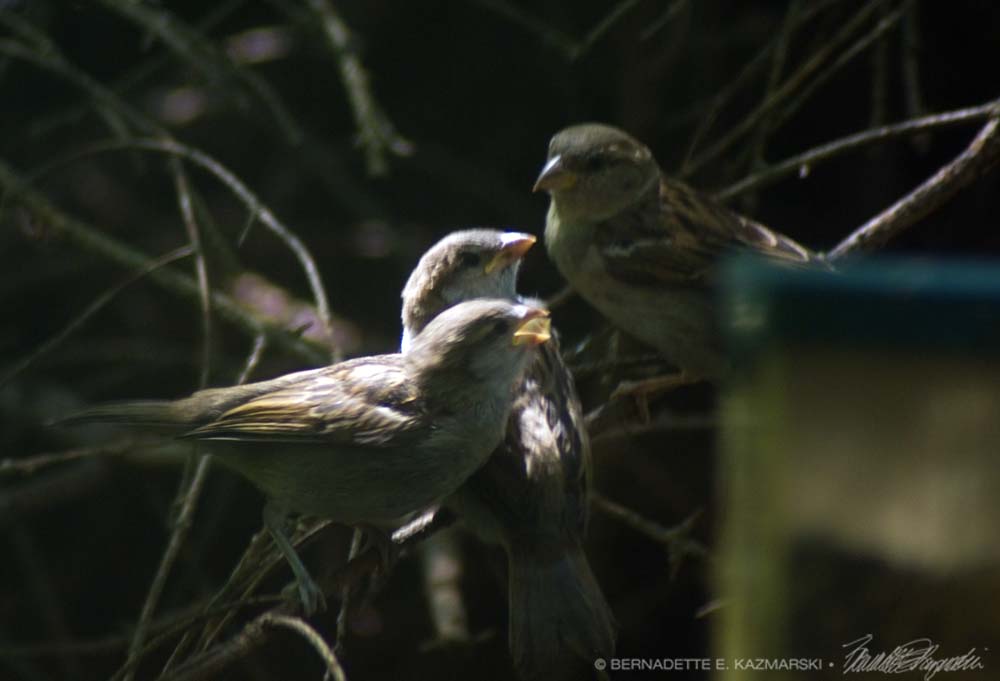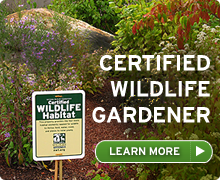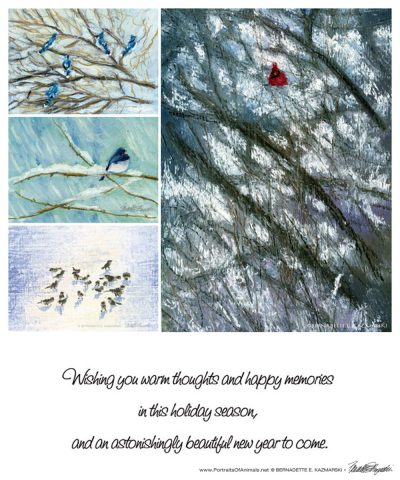Your Backyard Wildlife Habitat: Learning to Sing

HOW DO ANIMALS learn to talk? Pretty much the same way humans do—imitating their parents and other adults. Years ago I heard a story about birds and “baby talk”, learning to sing. The story had actual recordings of young captive birds such as chickadees and towhees obviously mispronouncing their “words”, leaving out “syllables”, and I realized that I had actually heard that outside in my back yard. This study catches them in the wild. One concern that goes along with this knowledge is that when habitats are fragmented by roads or development, increased noise or distance muffles the conversation and young songbirds don’t learn to sing as usual, and they can’t interact as effectively with other birds in later life. It happens with other animals as well. The press release below describes a study which gives us an idea of how and when birds learn to sing. Listen for it when you are enjoying your birds.
. . . . . . .
Baby birds learn to sing from adults new University of Windsor study shows
WINDSOR, ON, Oct. 4, 2018 /CNW/ – Just like humans, young songbirds are thought to learn their vocalizations by listening to adults – a process that has been studied in the laboratory but never experimentally in the wild, until now.
A new investigation, published today in Current Biology, demonstrates that wild birds learn to sing based on sounds they hear in the first year of their life.
“This research is the first direct experimental demonstration of vocal learning in wild birds,” says Dan Mennill, a University of Windsor professor and lead author of the study.
“We used loudspeakers to simulate the voices of wild birds, and we broadcast songs with distinctive acoustic features to five generations of birds,” says Mennill, “We found that young Savannah Sparrows learned the distinctive songs from the loudspeakers, demonstrating the phenomenon of vocal learning in wild animals.”
During the course of a six-year field study, 30 birds learned songs that matched the experimental vocal tutors.
“In addition to the 30 birds that learned songs from the loudspeakers, in four cases birds passed the experimental songs on to other birds. This reveals two generations of vocal learning,” said Mennill.
The research, conducted on eastern Canada’s Kent Island at the Bowdoin Scientific Station, was on a long-studied population of Savannah Sparrows.
“We have been studying Savannah Sparrows on Kent Island for many generations, and we know that many birds born on this island return to breed here as adults,” said Ryan Norris, a University of Guelph professor and a co-author on the study.
“This presented us with a special opportunity to manipulate the early acoustic environment of young sparrows, and then study the voices of those same animals when they returned from migration as adults.”
In a second part of the experiment, the researchers varied the time of year when different experimental songs were played through the loudspeakers.
“We found that birds need to hear a song not only in the first months of their lives, but also when they returned from migration the following spring,” said Mennill. “This reveals that there are two critical stages for vocal learning: exposure to adult sounds early in life, followed by re-exposure at the onset of adulthood.”
The collaborative research was funded by grants from the Natural Sciences and Engineering Research Council of Canada (NSERC) and involved research teams from the University of Windsor, the University of Guelph, and Williams College.
“This research presents a new technique that can be used to study vocal learning in wild animals,” added Mennill. “Importantly, this investigation confirms that the conclusions of decades of findings from laboratory experiments hold true in the wild.”
Photos and video, please credit Dan Mennill:
SOURCE University of Windsor
CONTACT: Author contact: Professor Dan Mennill, [email protected], 519-253-3000 ext. 4726; Media contact: Lori Lewis, Manager of News Services at University of Windsor, [email protected], 519-253-3000 ext. 3241, Images and videos: Credit: Dan Mennill

Backyard Wildlife Habitats

My backyard wildlife habitat was certified through National Wildlife Federation’s program in 2003, and their site is still one of my favorite references for information. Visit and read about it, and begin planning your own and be certified!
. . . . . . .
Read the entire series of introductory articles:
An Introduction to Backyard Wildlife Habitats
What’s in Your Backyard? The First Step in Planning Your Backyard Wildlife Habitat
What Else is in Your Backyard: The Fauna That Fill It
Bringing it All Together: Enhancing and Developing Your Habitat
. . . . . . .
Also read about my art, photography, poetry and prose inspired by my backyard wildlife habitat:
Art Inspired by My Backyard Wildlife Habitat
Photography Inspired by My Backyard Wildlife Habitat
Poetry Inspired by My Backyard Wildlife Habitat
Prose Inspired by My Backyard Wildlife Habitat
Or just read other articles in the category of Your Backyard Wildlife Habitat
Art and Gifts featuring cats you know! Visit Portraits of Animals
Backyard Birds Art and Greeting Cards from Portraits of Animals!

“That would make a great card!” That’s usually how I decide which of my paintings or photos will end up as a greeting card or note card, following the advice of someone’s suggestion. When it comes to my birds, many of the paintings and photos are from winter, when the birds are simply easier to see, but also one of my favorite seasons for painting and photography.

Copyright
All images and text used on this site are copyrighted to Bernadette E. Kazmarski unless otherwise noted and may not be used without my written permission, although links to your site are more than welcome and are shared. Please ask if you are interested in using and image or story in a print or internet publication. If you are interested in purchasing a print of an image or a product including it, check my animal and nature website Portraits of Animals to see if I have it available already. If you don’t find it there, visit Ordering Custom Artwork for more information on a custom greeting card, print or other item.
Subscribe to my e-newsletter
Subscribe to The Creative Cat Preview E-newsletter.
© 2022 | www.TheCreativeCat.net | Published by Bernadette E. Kazmarski
Weekly schedule of features:
Sunday: Essays, Pet Loss, Poetry, The Artist’s Life
Monday: Adoptable Cats, TNR & Shelters
Tuesday: Rescue Stories
Wednesday: Commissioned Portrait or Featured Artwork
Thursday: New Merchandise
Friday: Book Review, Health and Welfare, Advocacy
Saturday: Your Backyard Wildlife Habitat, Living Green With Pets, Creating With Cats
And sometimes, I just throw my hands in the air and have fun!



